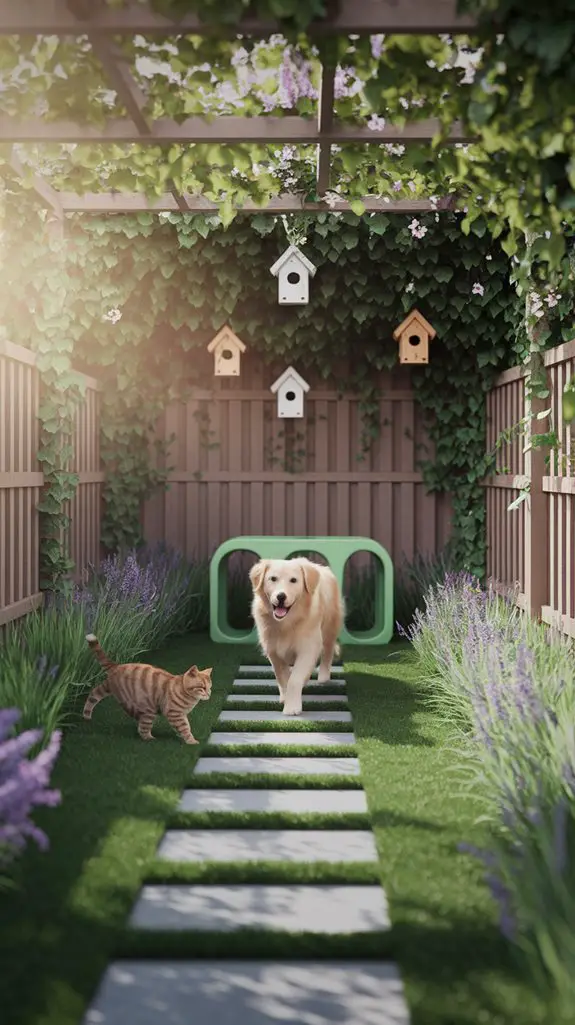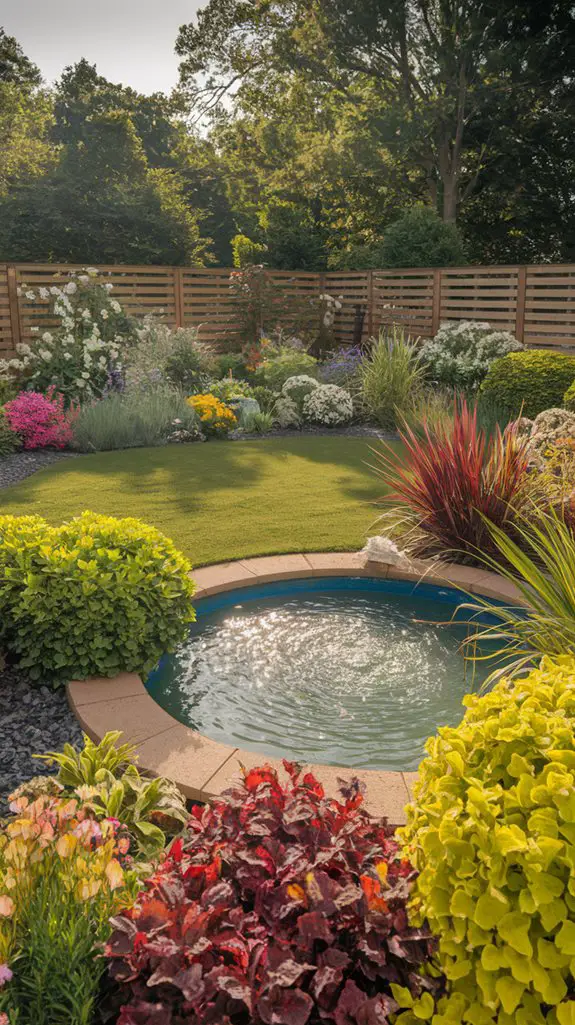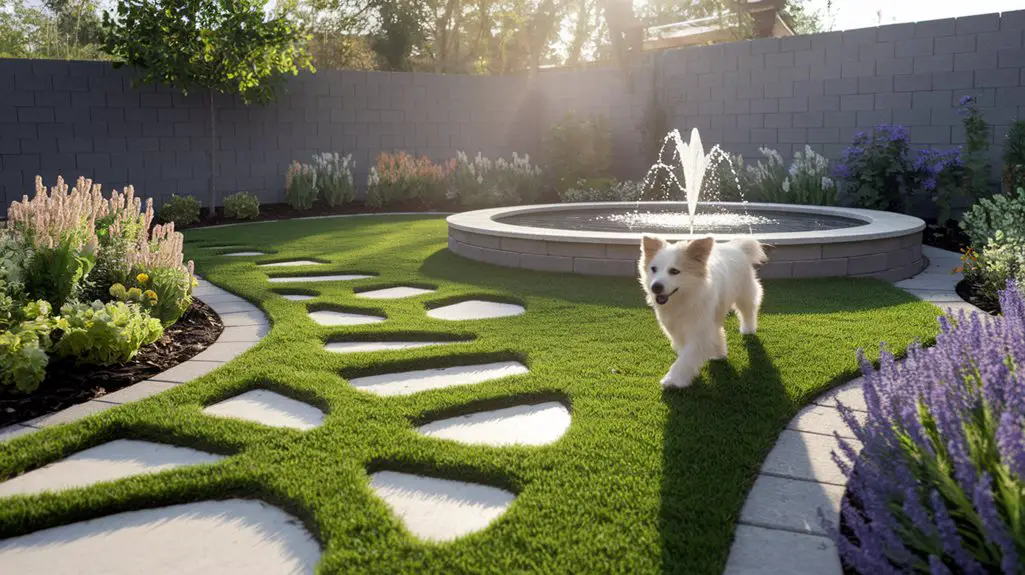You’ve likely noticed your pet’s excitement when outdoor time arrives. Creating a dedicated pet-friendly space in your yard serves multiple purposes beyond simple enjoyment. It provides a controlled environment for exercise, stimulation, and safety—essential components for your pet’s physical and mental wellbeing. The right design choices minimize potential hazards while maximizing engagement opportunities. But what specific elements transform an ordinary yard into an ideal pet paradise that benefits both you and your furry companion?
Health Benefits for Pets and Owners
When properly designed, pet-friendly outdoor spaces deliver substantial physiological and psychological health advantages for both animals and their human companions.
For pets, these environments provide essential exercise opportunities that prevent obesity and reduce destructive behaviors stemming from pent-up energy. Regular outdoor stimulation also enhances their cognitive development and reduces stress-related health issues.
You’ll experience significant benefits too. Accompanying your pet outdoors increases your physical activity levels, potentially lowering blood pressure and improving cardiovascular health. Furthermore, creating a pet-friendly backyard oasis fosters an enriching environment that encourages exploration and play.
The time spent together strengthens your emotional bond while exposure to natural settings reduces your cortisol levels and anxiety. Research indicates that pet owners who utilize outdoor spaces with their animals report improved mood regulation and decreased symptoms of depression compared to those without such interaction opportunities.
Creating Safe Zones for Pet Activities

Safety forms the foundation of any effective pet-friendly outdoor space, requiring thoughtful planning to maximize both enjoyment. Incorporating sustainable backyard designs can enhance the environment while ensuring your pets have a safe and enjoyable space to play.
Pet-Friendly Plants and Landscaping Solutions

While designing your pet-friendly outdoor space, selecting appropriate plants and landscape elements becomes essential for creating an environment that’s both beautiful and safe for animals.
Avoid toxic species such as lilies, azaleas, and sago palms that can cause severe reactions if ingested. Instead, opt for pet-safe alternatives like sunflowers, rosemary, and catnip.
Implement sturdy groundcovers that withstand paw traffic—clover, buffalo grass, and synthetic turf offer durability while minimizing mud tracking.
Create defined pathways using rounded pebbles rather than sharp gravel to protect sensitive paws. Consider raised garden beds to separate delicate plants from curious pets.
For water features, guarantee gradual entry points to prevent drowning risks.
Install proper drainage systems to eliminate standing water, which can harbor parasites and mosquitoes that threaten your pet’s health. Additionally, incorporating pet-friendly landscaping options can enhance the overall aesthetic while ensuring safety and comfort for your furry friends.
Shade and Shelter Options for Outdoor Comfort
Providing adequate shade and shelter within your pet-friendly outdoor space serves as an essential component for maintaining your animal’s comfort and health throughout changing weather conditions.
When designing protective elements, consider both functionality and durability to guarantee year-round utility.
- Install adjustable canopies or sail shades that you can reposition as the sun moves.
- Create natural shelters using dense shrubs or small trees that offer cooling microclimates.
- Construct elevated platforms with overhead covers for protection against precipitation and ground moisture.
- Incorporate insulated doghouses or pet cabanas with ventilation for temperature regulation.
- Utilize pergolas with climbing vines that provide seasonal shade variation while enhancing aesthetic appeal.
Select materials that resist weather deterioration and implement drainage solutions to prevent water accumulation in shelter areas. Additionally, include eco-friendly materials that are safe for your pets and the environment to further promote sustainability in your backyard design.
Water Features That Delight Both Pets and People
Water features represent a dynamic addition to any pet-friendly landscape, seamlessly blending aesthetic appeal with practical benefits for both animals and their owners.
When designing these elements, consider installing shallow ponds with gently sloping edges that allow pets to wade safely while providing drinking opportunities.
Circulating water fountains serve dual purposes: they create soothing ambient sounds while ensuring fresh water remains available for your pets throughout the day. These systems discourage mosquito breeding and reduce stagnation concerns.
For smaller spaces, consider wall-mounted water features that minimize splashing while still offering the sensory benefits of moving water.
Install pet-accessible drinking stations at appropriate heights, incorporating filtration systems to maintain water quality.
Remember to use non-toxic sealants and avoid chemical treatments that could harm curious animals who might drink from or play in these water features. Additionally, incorporating pet-friendly materials in your design ensures that your oasis is safe and enjoyable for all.
Durable Materials for High-Traffic Pet Areas
Selecting the right materials for areas frequently traversed by pets represents a critical design decision for lasting outdoor spaces.
You’ll need surfaces that withstand constant paw traffic, resist scratching, and maintain their integrity despite exposure to pet waste and weather elements.
- Concrete pavers offer exceptional durability while providing texture that helps prevent slipping when surfaces become wet.
- Artificial turf designed specifically for pets includes antimicrobial properties and efficient drainage systems.
- Composite decking resists scratching, staining, and doesn’t splinter like traditional wood.
- Decomposed granite compacts well for pathways while remaining gentle on paw pads.
- Rubber mulch provides a resilient surface for play areas that won’t stick to fur or retain odors.
Additionally, choosing low-maintenance materials ensures that your yard remains functional and beautiful with minimal effort.
Designated Pet Waste Management Strategies
Even the most resilient materials in your pet area require an extensive waste management strategy to maintain their functionality and appearance.
Implement a designated waste station with biodegradable bags and a covered receptacle positioned away from high-traffic zones. This centralized approach encourages consistent cleanup habits.
Install a specialized pet waste disposal system that connects to your septic system or employs enzymatic breakdown technology to minimize environmental impact.
Consider installing permeable surfaces with proper drainage in elimination zones to prevent waste saturation and bacterial growth. Additionally, having a pet-friendly fenced yard can enhance your outdoor space while ensuring your pets have a safe area to play and relieve themselves.
Conclusion
Your pet-friendly outdoor space isn’t just a luxury—it’s an investment in health and happiness for both you and your four-legged companions. By integrating safe materials, appropriate plantings, and thoughtful design elements, you’ll create a sanctuary that meets your pet’s instinctual needs while enhancing your property. Will you continue to settle for a backyard that merely exists, or transform it into a space where memories are made?




